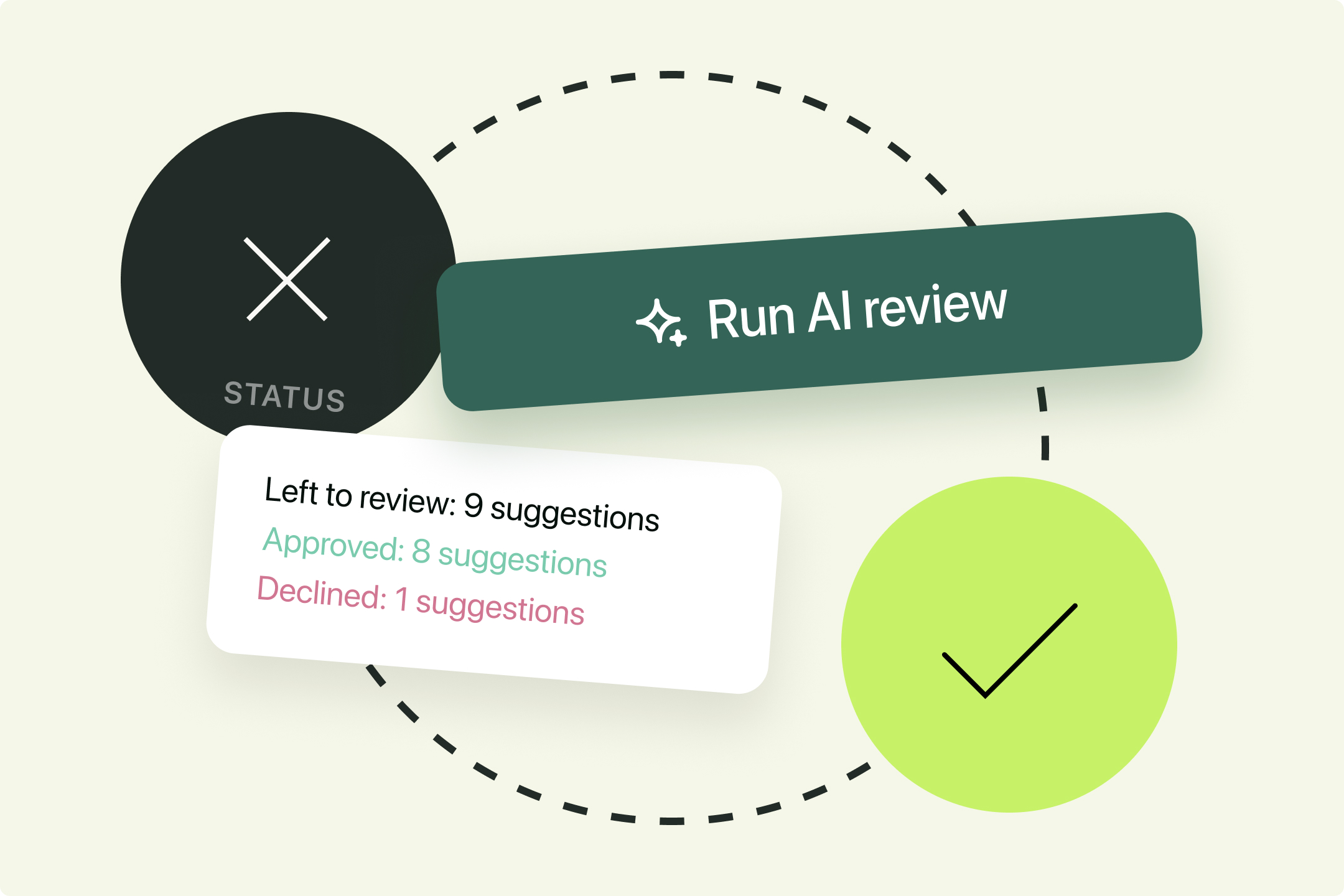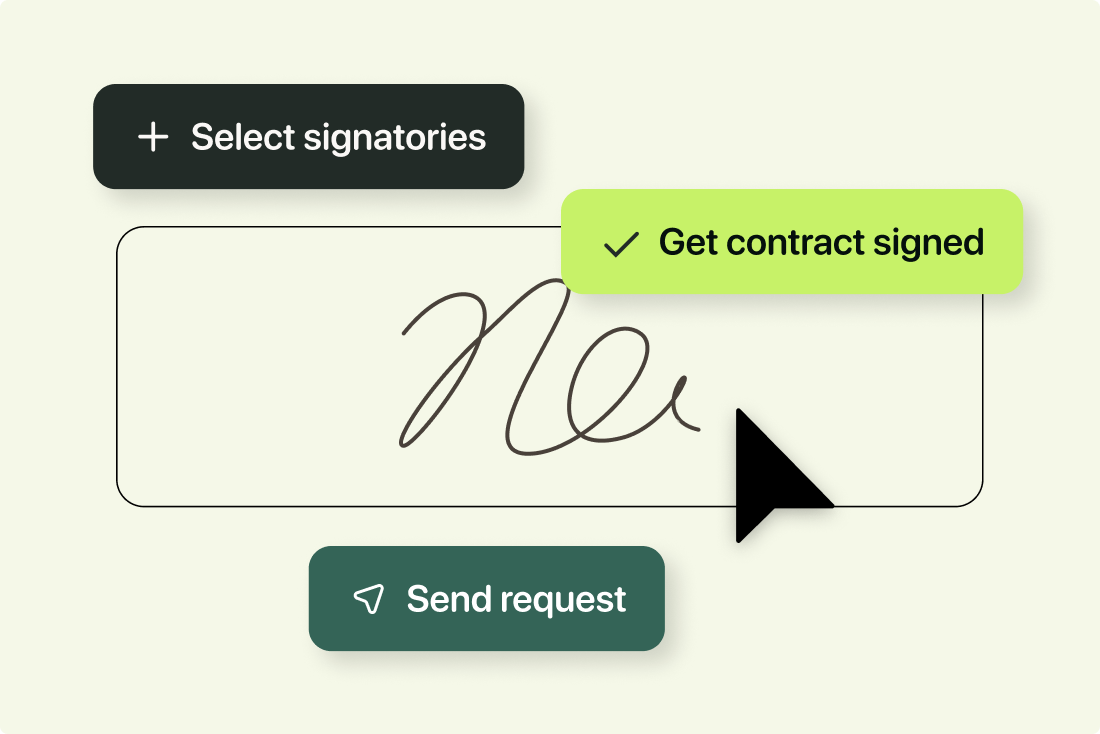Solutions
Customer Support
Resources
A contract management audit helps you step back, assess what’s really happening across the lifecycle, and pinpoint exactly where inefficiencies, delays, and risks are creeping in.
A contract management audit is an analysis of your contract lifecycle and how efficiently you handle this process.
A management audit allows you to analyze each stage of your contracting process and highlight which of these areas need improvement. Separating this out into stages allows you to work out what needs to be done to boost the performance of your contract process.
The audit itself needs to take account of the resources, processes and stakeholders involved with handling agreements in the company. This spans from the formulation and negotiation of contracts to finalizing and monitoring them.
Research by PwC revealed in 2018 that the average company maintains 20,000 to 40,000 contracts, while McKinsey & Company found that a lack of effective contract management ‘can cause an erosion of value in sourcing equal to 9% of annual revenues’.
Although this of course varies depending on the size of the company, it's clear that contracts play a significant commercial role in each and every business.

With this in mind, making sure your contracting process is up-to-date, smooth and running the best it can. This is when auditing comes in.
Auditing this process allows you to identify how the process is currently working and what could be done differently. This could lead to questions such as:
Having an idea of exactly how your current process is working is essential for maintaining healthy contracts and ensuring that every contract functions how it is supposed to.
The main aim of a contract management audit is clear, to increase efficiency.
That said, there are some key objectives that you should keep in mind while
It helps to assess how much risk your current contract management process allows. Contracts can minimize the risk involved in certain transactions, however, some contracts carry more risk than others.
Contract risk management involves evaluating the risk contained within a contract and taking conscious steps to mitigate it. A solid contract management system can help you to do this by, for example, automating your contract approval workflow.
Evaluating the way in which you manage your contracts can help you to assess the level of risk you are taking during this process and how this could be limited.
You could find for example that your contracts are not visible enough, meaning how you find, view, track, and extract important information from your contracts is less effective than it should be.
For example, if a business lacks visibility into contracts, it can struggle to locate them in the first place; similarly it can be difficult to know where the bottlenecks are - is one team sitting on contracts to review longer than another?

A contract management audit gives you the chance to identify opportunities for improvement, be this in how you create, store or use contracts.
A contract management audit gives you the chance to identify improvement opportunities at different stages of the lifecycle.
At various stages, the person working on the contract can change, as it moves from draft to the approval, review and signature stages. This means things can slip through the cracks if stakeholders lack the knowledge or authority to process it correctly.
Ensuring that you have an overview of your entire contract lifecycle is key and an audit is one way to do this. It could even help you to determine if you could benefit from contract lifecycle management (CLM) software or, if you already have a CLM system in place, the optimizations you may need to make.
Last but not least, understanding how you manage your contracts means you can improve it. No matter how small these changes are, they could be essential to ensuring the success of your business.
If your audit reveals that you’re missing out on renewals simply by not noticing existing contracts are about to expire, this is a good indicator that your contract management process needs to be improved.
Missing a contract deadline could be a costly mistake, especially if you miss a renewal deadline. Keeping on top of these deadlines is essential.
An audit will point out any underlying issues such as this to you, it is up to you to decide if this issue is worth addressing for your company. This could mean investing in a CLM that helps you to establish a basic contract repository or contract database to keep track of contracts.
How do you actually conduct an audit of your contract management process? Here are seven tried and tested steps from in-house legal teams we speak to daily.
Analyzing how you create contracts is the first step in any contract management audit. For most, this process begins with creating accessible and usable templates.
It is essential to maintain up-to-date contract templates for recurring contracts/contract types in order to ensure best practice.
Using templates saves time and resources by ensuring work isn’t duplicated and there is consistency in contracts. Traditionally, this process involves lots of steps with templates being stored in a variety of ways.
Look at how you can reduce the number of steps it takes to generate a usable contract and make note of the areas where this could be reviewed. If you are waiting days or even weeks for a contract to be approved by legal, it might be a sign that your templating process is dated.
An audit may reveal that, like many businesses, yours would benefit from using automated templates for contracts.

The first step is to ask, who are my approvers? Look at who is at the heart of this process.
Are busy C-suite executives signing off on low-risk low-value contracts? If so, could this be reassigned to a more suitable person. Aim to create approval thresholds that empower teams to sign off contracts themselves.
You need to consider the data on how long contracts take to be internally approved, then deciding if this could be improved at some stage. Auditing means you can take action and hopefully bring that time down.

No one team uses contacts in a company. Legal, HR and sales are the most likely candidates to be negotiating contracts and they all need to agree on this process.
Ask the following:
It is important to ensure that individual teams are aware of the terms that may affect the timeline, reporting requirements or other factors involved in meeting customer expectations.

Now, there are so many ways to sign a contract. Some require a ‘wet signature’, where parties are required to physically make a mark on paper with a pen while others accept electronic signatures created on devices such as desktops, tablets, and mobiles.
It is worth taking a look at how you sign contracts within the business. Electronic signatures are rapidly becoming more widely across businesses, as they are more secure, accessible and save time.
The most common and professional way to create an electronic signature is by using a specialist eSignature tool. If you do not already, it may be worth investing in a tool or platform that allows you to do so.
In fact, you can create electronic signatures across a variety of platforms, as well as using a native e-signature in a platform such as Juro.

Review the signing process, think about how you could invest in this process to increase its functionality.
Do you know what stage of the contract lifecycle your contracts are in? Having a comprehensive system to track contracts is essential.
Tracking contracts means you minimize the risk of missing an all important renewal date again, can avoid costly auto-renewals and track obligations.
Look into how you currently track contracts and more importantly, if this is working. Tracking your contracts’ progress before and after signature is key to achieving a more efficient workflow.
First, look into how you store your contracts. This could be in a shared drive, a folder on a or in CLM software. No matter what you use, your contracts should be kept securely in a central location that is easily accessible for those who need it.
The system you use to store contracts also needs to be compliant with any and all terms and conditions.
Check who has permission to access this information. It is normal to have people join or leave the company, which also makes it easy for permissions and file access to be overlooked.
Make sure that those who need them have the tools they need to effectively execute and manage contracts. If the right people have easy and reliable access to your contracts, it limits the chance of data leaks, lowers risk and protects revenue.
How do all these processes tie together? If you can’t answer or worse the answer is that they don’t, it might be time to invest in a contract management platform.
With a CLM like Juro you can create your own unique workflow and integrate with thousands of platforms to accelerate your business.
For example, you could speed up your sales contract process by integrating your contract platform with your native CRM, think Salesforce or Hubspot. That way, your sales reps could create contracts directly from this space and cut out the go-between.

If your audit has revealed gaps, bottlenecks, or unnecessary risk, you don’t need to fix them one by one. With an all-in-one solution like Juro, you can connect every stage of the contract lifecycle into a single, automated workflow — from creation to renewal. See how teams like yours are auditing less and agreeing contracts faster. Book a personalized demo today.
Lorem ipsum dolor sit amet, consectetur adipiscing elit. Suspendisse varius enim in eros elementum tristique. Duis cursus, mi quis viverra ornare, eros dolor interdum nulla, ut commodo diam libero vitae erat. Aenean faucibus nibh et justo cursus id rutrum lorem imperdiet. Nunc ut sem vitae risus tristique posuere.

